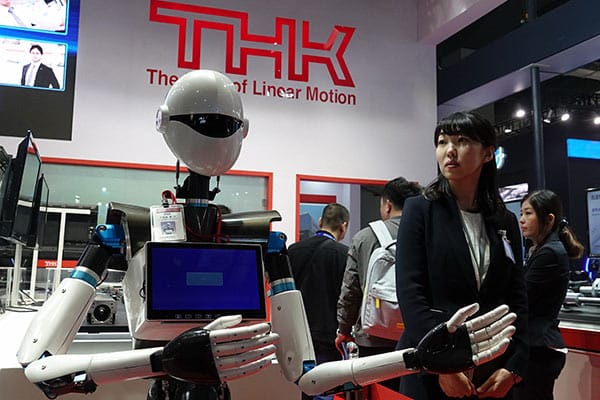Collaborative robots, also known as cobots, are designed to assist humans with tasks that are hazardous and dangerous to health. The primary function of these robotic systems is to co-exist peacefully and operate smoothly alongside humans in the same space, hence making the utilization of the diverse strengths of both humans and robots very efficient.
These robots are significantly less expensive and possess the ability to work under harsh conditions. It makes the working process simple and swift and enables the accomplishment of tasks over a short period of time – completing it more perfectly and accurately than humans.
The use of such robots has increased drastically, motivated by rising labor costs and daily increasing need for automation. The capacity to undertake tough and repetitive tasks has increased the acceptance of cobots across various industrial areas worldwide. For instance, industries that operate using chemicals and high temperatures in the processes pose a threat to human health and can cause severe damage to humans.
In such a situation, cobots can be a useful solution as they work under any difficult condition without safety concerns and with reduced risk of human employee health. Cobots can be trained and deployed to their places of primary assignments easily. Research has it that cobots work at a moderate speed compared to industrial robots and are designed to sense the movement of users in close proximity, making it safer for humans to work alongside them. They are capable of interacting with human users in a much more fluent way, by combining the coordination and cognitive capabilities of humans with the robot’s accuracy.
The revolution that brought about the existence of Cobots is entirely unprecedented in the seventy-year history of robotics. No similar machine has come so far so fast and has so penetrated the marketplace like this easily and without much hype for recognition. Here are the 5 possible applications for Cobots, to facilitate human life:
- PICK AND PLACE
A pick and place task is any in which a workpiece is picked up and placed in a different location. In construction sites, human workers manually perform the difficult task of picking and placing equipment and tools repeatedly. This nature of the job can lead to injuries, mistakes, and inaccuracies. Hence there is needed to employ the use of collaborative robots to help accomplish this difficult and dangerous task
- MACHINE TENDING
Machine tending requires a person to stand before a machine, operating it to carry out certain tasks such as sealing bottles in bottling companies before packaging them for delivery. The process is long and stressful for the human operator hence the use of cobot would be highly recommended for ease. These types of cobot applications may require an input and output interfacing hardware detailed to the machine. The I/O hardware helps the robot know when material needs to be replenished.
- PROCESS TASKS
A process task is one that normally requires a tool to communicate with a workpiece. Examples are gluing processing, dispensing, or welding. These tasks may require tools to go down a fixed path repeatedly. Training employees to accomplish these processing tasks can be a hectic and tedious process so acquiring a suitable robot capable of doing this job effectively is necessary.
- FINISHING TASKS
Finishing tasks performed by human operators require a manual tool and a great push for finalization. The vibrations and sounds generated by the tools can cause damage to the operator. These finishing jobs can include polishing, grinding, or going through the stress of walking to the bank to deposit money when you can easily use your credit card which also happens to be a semi-bot because it is automated. A cobot can be taught manually, or through computer programming methods, how to provide the necessary force, repetition, and accuracy required for finishing jobs.
- QUALITY INSPECTION
The last task that can be accomplished via a robot is a quality inspection of parts and finished tasks. The process usually involves a full inspection of finished tasks, high-resolution images for precision machined parts, and verifications of different kinds. Using cobots for inspection is sure to result in higher-quality inspection and greater accuracy in production.
To sum up, in recent times, scientists are bypassing various engineering challenges by manufacturing personal domestic robots that help in the accomplishment of tedious tasks. The introduction of Cobot by China’s robotic industries has brought about great success in the field of engineering and sciences and they promise to be future power horses in all modern industries soon.

